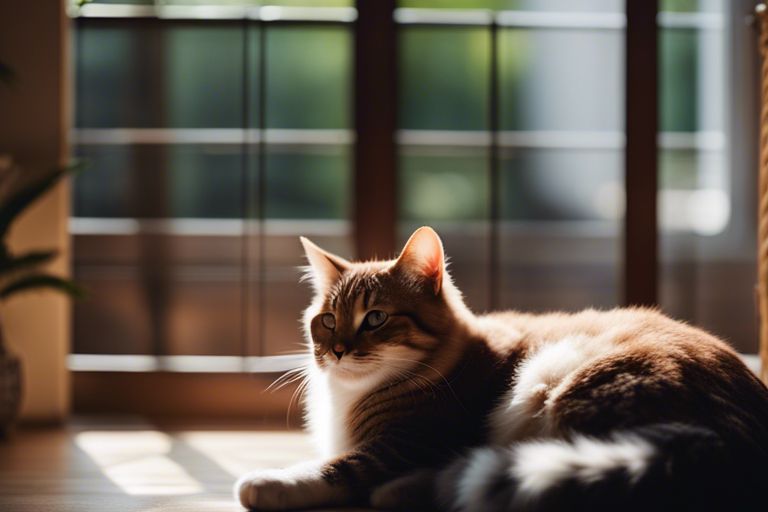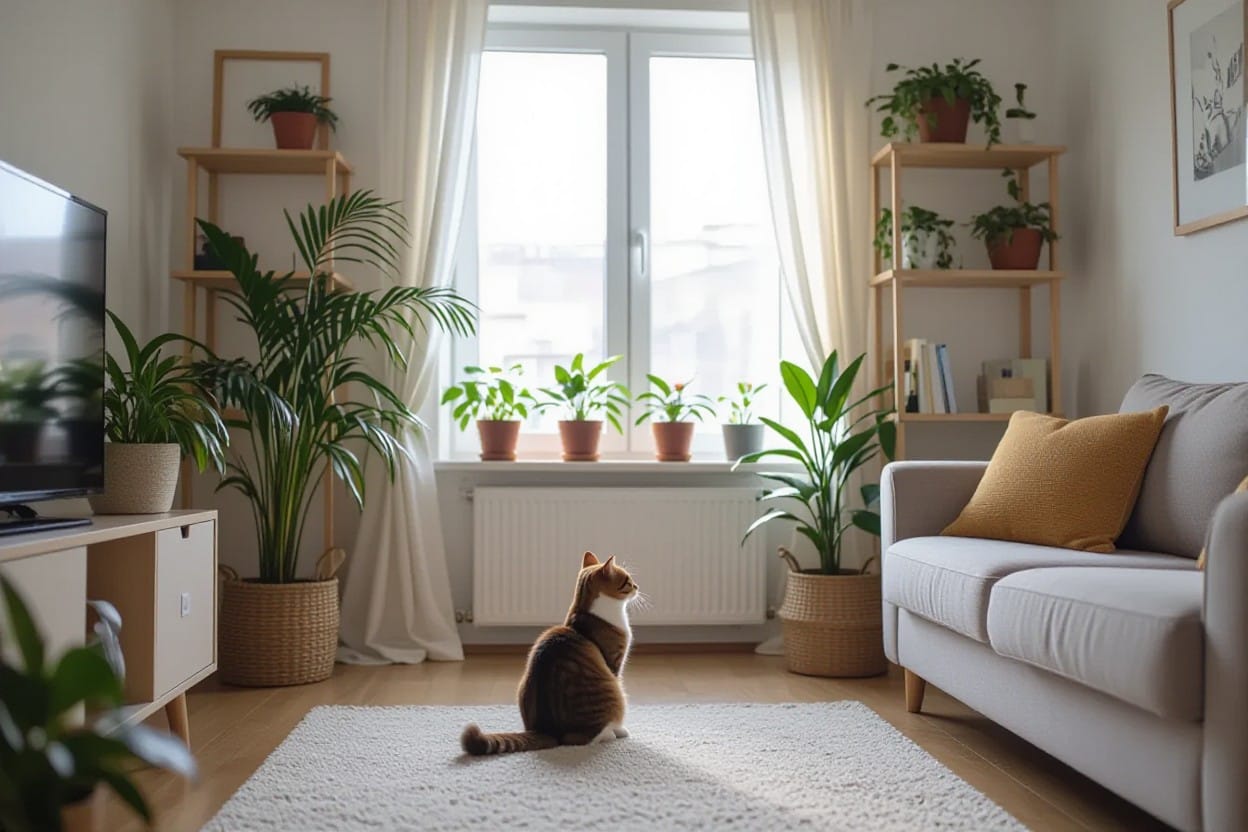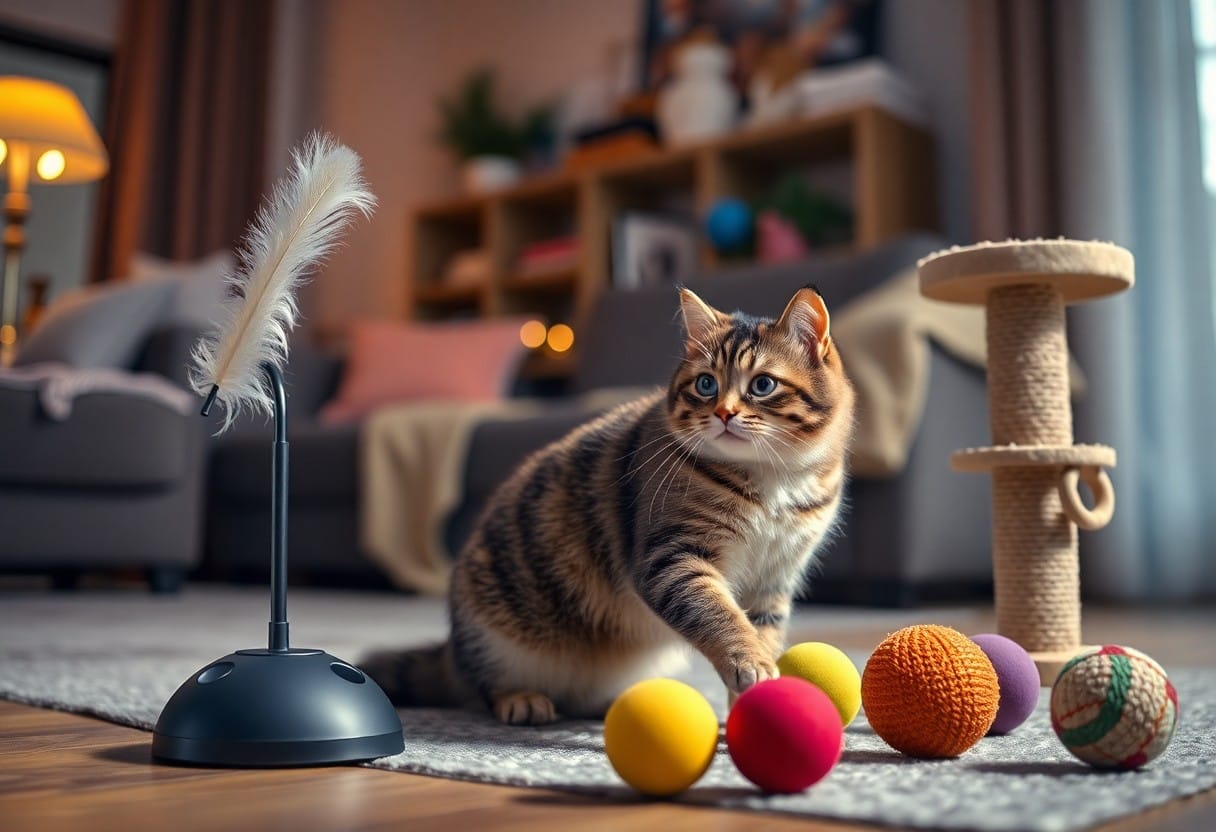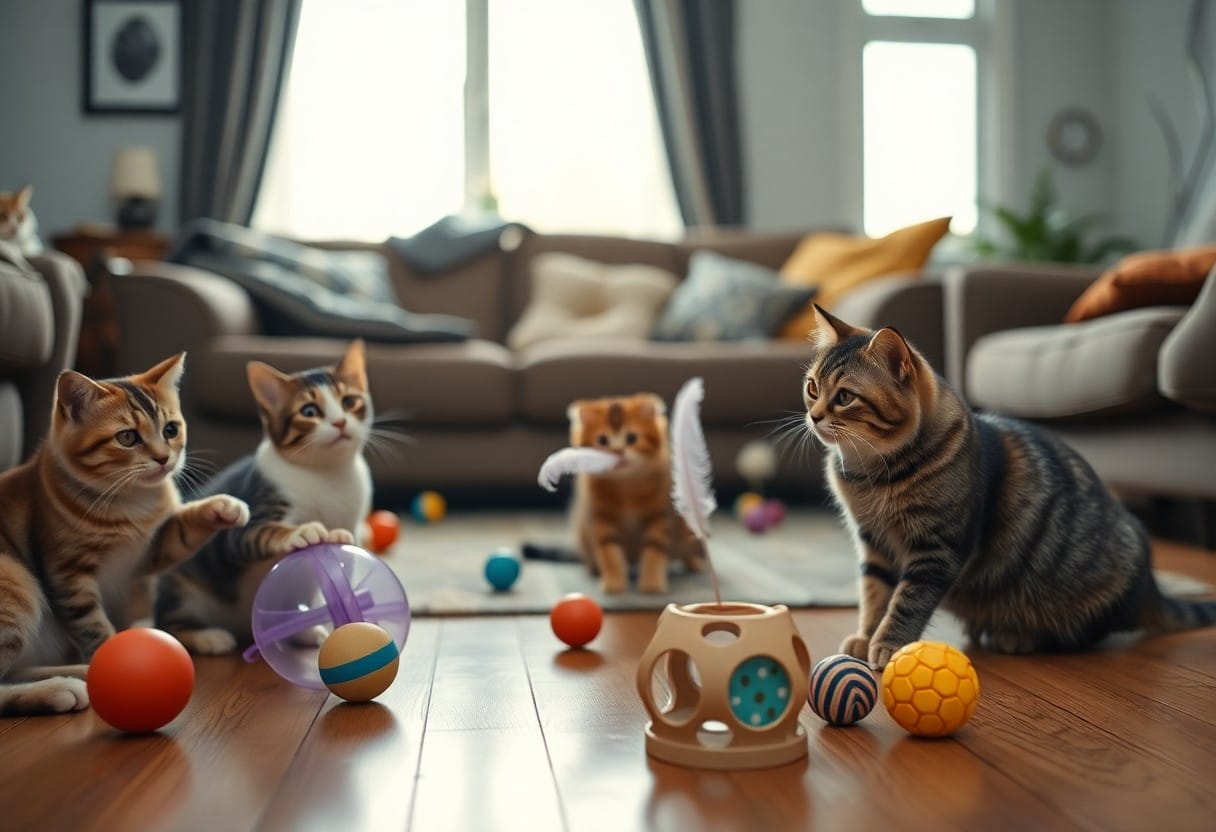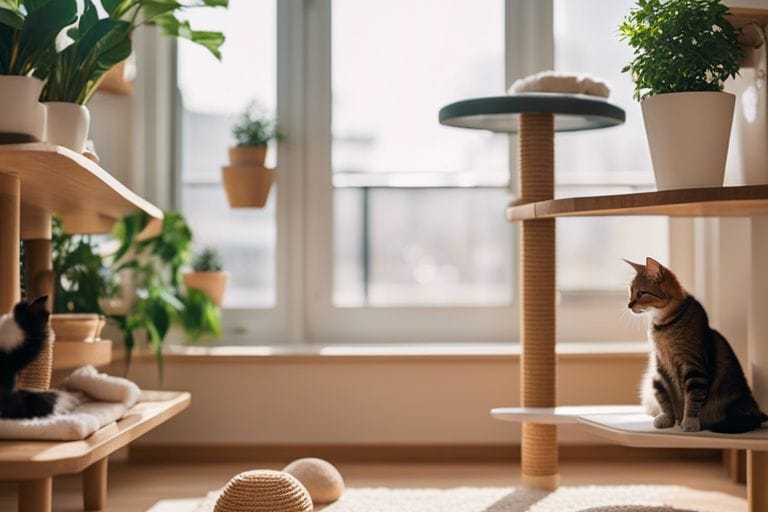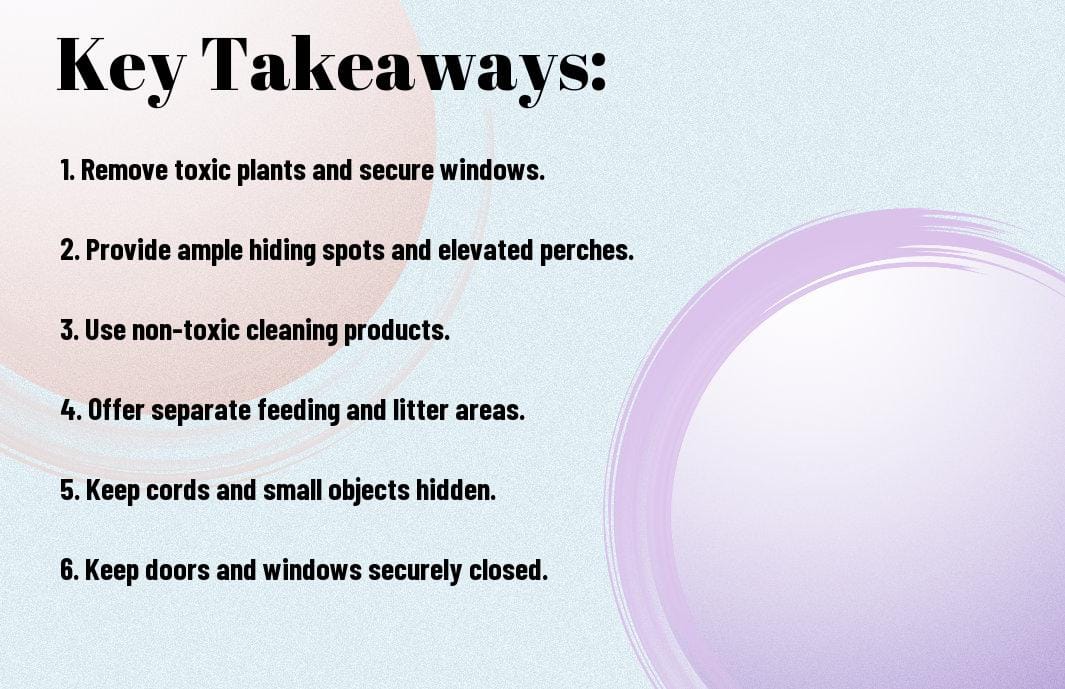There’s nothing more important than ensuring your feline friend is safe and secure in your home. By cat-proofing your living space, you can prevent accidents and create a safe environment for your beloved pet. From securing hazardous items to creating vertical spaces for exploration, these expert tips will help you transform your home into a cat-friendly haven.
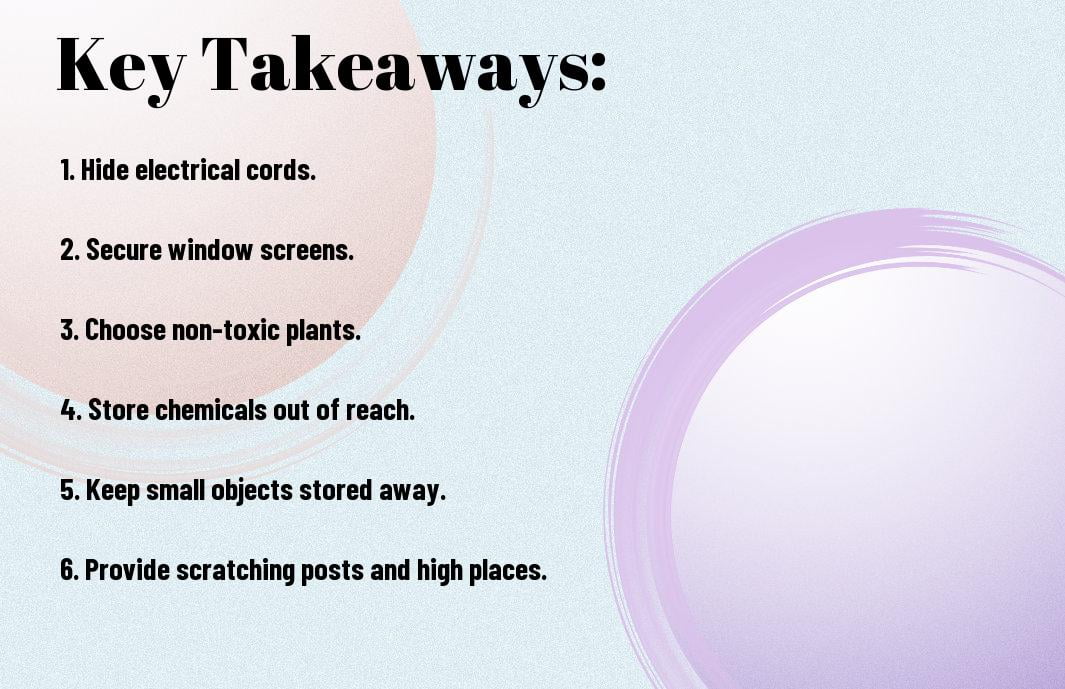
Identifying Common Household Hazards
The safety of your feline friend starts with identifying common household hazards that could potentially pose a threat to their well-being. From toxic plants to small objects that can be a choking hazard, being aware of these dangers is crucial in creating a safe environment for your cat.
Toxic Plants and Foods
Any responsible cat owner should be vigilant about keeping toxic plants and foods out of reach of their curious feline companions. Common household plants such as lilies, poinsettias, and philodendrons can be toxic to cats if ingested. Additionally, foods like chocolate, grapes, onions, and garlic can also be harmful. Be sure to research which plants and foods are toxic to cats and ensure they are not accessible to your pet.
Choking Hazards and Small Objects
Small objects around the house can easily become choking hazards for your cat. Items like rubber bands, hair ties, small toys, and even batteries should be kept out of reach to prevent accidental ingestion. Cats are naturally curious creatures and may be inclined to play with or chew on small objects, so it’s important to be proactive in removing these hazards from their environment.
Understanding the potential dangers that small objects pose to your cat is necessary in maintaining a safe living space for them. Regularly inspecting your home for any small items that could be a choking hazard and keeping them safely stored away will help reduce the risk of accidents.

Secure Your Home Spaces
The Dangers of Unsecured Windows and Balconies
For many cat owners, the idea of their feline friend falling from an unsecured window or balcony is a nightmare scenario. Cats are curious by nature and may be tempted to explore open windows or jump onto balcony railings. To prevent accidents, make sure all windows have secure screens or guards in place. Balconies should be enclosed with cat-proofing materials such as wire mesh or pet-safe barriers to keep your cat safe while still allowing them to enjoy the outdoor view.
Protecting Electrical Cords and Outlets
Cords
Electrical cords and outlets pose a significant danger to cats who may chew on them out of curiosity or as a form of play. To protect your cat from electrical hazards, secure cords against baseboards or use cord protectors to prevent chewing. Consider hiding cords behind furniture or using cord organizers to minimize temptation. Cover outlets with safety plugs when not in use to prevent your cat from inserting their paws or objects into the sockets.
Unsecured
Safeguarding Kitchens and Bathrooms
Safeguarding
The kitchen and bathroom are common areas where potential dangers lurk for cats. Keep cabinets closed or use childproof latches to prevent access to toxic cleaning products. Store away small kitchen appliances and utensils that could be hazardous if knocked over. In the bathroom, secure medications and personal care products in cabinets with childproof locks. Be cautious of hot surfaces such as stovetops and hair straighteners that could cause burns to your curious kitty.
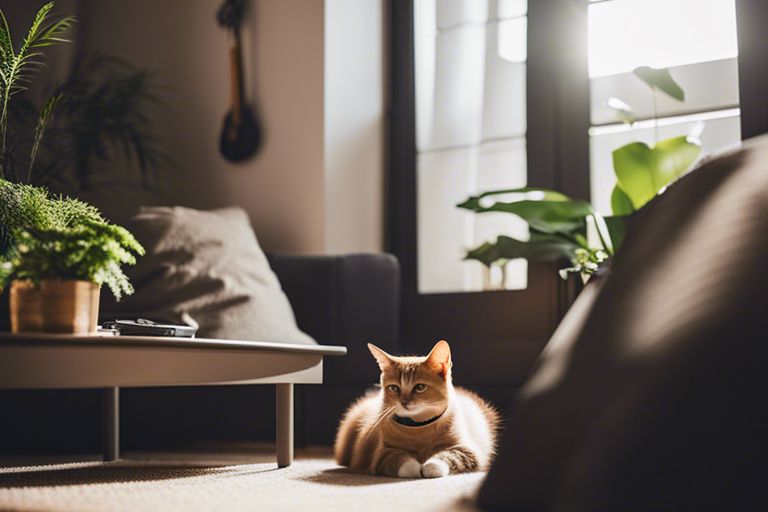
Creating a Cat-Friendly Environment
After cat-proofing your home, the next step is to create a cat-friendly environment that encourages your feline friend to explore and play safely. By setting up designated areas for your cat to play, relax, and exercise, you can help prevent boredom and behavioral issues.
Establishing Safe Play Areas
With cats being natural hunters and climbers, it’s important to create safe play areas where they can climb, scratch, and pounce. Consider installing cat trees, shelves, and scratching posts in various rooms to provide vertical space for your cat to explore. Creating different levels and hiding spots will keep your cat engaged and mentally stimulated.
Choosing Appropriate Cat Toys and Accessories
Appropriate toys and accessories are crucial for keeping your cat entertained and active. Choose toys that mimic prey animals like mice or birds, as these will tap into your cat’s hunting instincts. Interactive toys, such as feather wands or laser pointers, can also provide hours of entertainment for your cat.
Choosing toys made from safe materials that can withstand your cat’s play habits is crucial to prevent any choking hazards. Rotate your cat’s toys regularly to keep them interested and engaged, and always supervise playtime to ensure their safety.
Controlling Unwanted Feline Behavior
Deterring Scratching and Climbing
Keep your furniture safe from sharp claws by providing your cat with appropriate scratching posts made of sturdy materials like sisal or cardboard. Place the posts strategically near your cat’s favorite scratching spots. To deter climbing on furniture or other unwanted surfaces, consider using double-sided tape or aluminum foil on the areas your cat tends to climb.
Preventing Counter Surfing and Garbage Diving
Controlling your cat’s access to kitchen counters and garbage cans is crucial for a safe environment. Ensure that all food items are stored securely, and garbage cans have tight-fitting lids. For counters, you can use motion-activated deterrent devices that emit a harmless spray of air when your cat jumps up, teaching them to stay off these surfaces.
Preventing counter surfing and garbage diving not only keeps your cat safe from consuming harmful substances but also maintains cleanliness in your home. Consistent training and providing alternative activities for your cat to engage in will help reinforce good behavior and discourage these unwanted behaviors.
Storage and Organization Strategies
Properly Storing Dangerous Household Chemicals
To ensure the safety of your cats, it is necessary to properly store dangerous household chemicals. These substances can pose a serious threat if ingested or even if they come into contact with your pets’ skin. To prevent any accidents, store all hazardous chemicals in secure cabinets or high shelves that are inaccessible to your cats. Make sure to tightly close lids on containers and clean up any spills immediately.
Organizing Cords and Electronics to Prevent Chewing
Cats are naturally curious creatures and may be tempted to chew on cords and electronics, which can be extremely dangerous. To prevent this behavior, organize and secure all cords out of your cat’s reach. Use cord organizers or conceal cords behind furniture to prevent your pets from accessing them. Additionally, consider using bitter apple spray or citrus-scented deterrents on cords to discourage chewing.
Monitoring Your Cat’s Health and Well-being
Unlike humans, cats cannot verbally communicate their health concerns, so it is crucial for pet owners to monitor their feline companions for any signs of illness or distress. By staying vigilant and proactive, you can ensure that your cat stays healthy and happy.
Recognizing Signs of Stress and Anxiety
Recognizing signs of stress and anxiety in your cat is important for maintaining their overall well-being. Common indicators of stress in cats include excessive grooming, hiding, changes in appetite, aggression, or vocalization. Understanding your cat’s usual behavior will help you detect any deviations that may signal a problem. If you notice any of these signs, it is important to identify and address the underlying cause to prevent further complications.
Implementing Regular Health Checks
Any responsible cat owner should prioritize regular health checks to ensure their feline friend’s well-being. Schedule annual check-ups with your veterinarian to monitor your cat’s weight, dental health, vaccinations, and overall physical condition. Additionally, keep an eye on your cat’s eating habits, litter box usage, and energy levels as changes in these areas could indicate potential health issues.
To maintain your cat’s health, it is important to follow your veterinarian’s recommendations for vaccinations, parasite prevention, dental care, and any necessary medications. These routine health checks not only prevent illnesses but also enable early detection and treatment of any emerging health concerns.
Monitoring
Final Words
Following this guide will help you create a safe environment for your feline friends by cat-proofing your home. By implementing these tips, you can prevent accidents, injuries, and potential hazards that may endanger your cat’s well-being. Recall, a cat-proof home is a happy and healthy home for your beloved pets.
Ensure all potential dangers are addressed, such as securing windows, hiding toxic plants, and eliminating small objects that could be ingested. By taking these precautions and consistently monitoring your home, you can provide a safe and secure environment for your cats to thrive in. With a little effort and attention to detail, cat-proofing your home can make all the difference in keeping your furry companions safe and happy.
FAQ
Q: Why is cat-proofing important for your home?
A: Cat-proofing your home is important to create a safe environment for your feline friend. Cats are naturally curious and can easily get into dangerous situations if your home is not properly cat-proofed.
Q: What are some common household items that are dangerous for cats?
A: Common household items that can be dangerous for cats include plants such as lilies, foods like chocolate and onions, stringy or small objects that can be swallowed, and toxic household cleaners.
Q: How can I prevent my cat from accessing dangerous areas in my home?
A: To prevent your cat from accessing dangerous areas, use baby gates to block off rooms, secure cabinets with child locks, and eliminate any small spaces where your cat could get stuck.
Q: How can I make my windows safe for my cat?
A: To make your windows safe for your cat, use window screens to prevent falls, avoid placing furniture near windows that your cat can jump from, and consider installing window guards for added protection.
Q: What are some tips for keeping electrical cords out of reach for cats?
A: To keep electrical cords out of reach for cats, use cord covers or wraps to hide cords, secure cords to baseboards or walls with clips, and unplug and store away any cords that are not in use.
